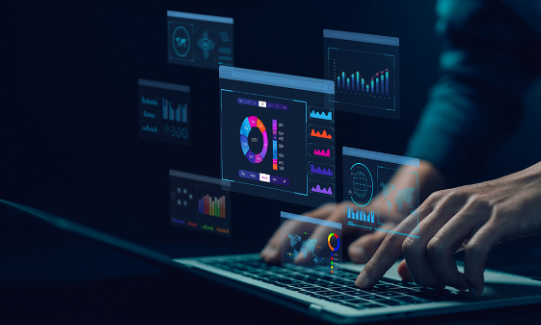In today’s hyper-connected business landscape, working with third parties—vendors, contractors, suppliers, or partners—is unavoidable. While this enhances agility and innovation, it also opens the door to significant risk. Data breaches, compliance violations, ethical missteps, and operational failures originating from third parties can have devastating consequences.
That’s why proactive and smart third-party risk management tools are no longer optional—they are essential for modern enterprises aiming to stay compliant, secure, and resilient.
Why Traditional Risk Management Isn’t Enough?
Many organizations still rely on manual spreadsheets, emails, and static questionnaires to assess third-party risks. While these methods may have sufficed in the past, they simply can’t keep up with today’s complex and fast-paced threat landscape.
Manual processes often result in:
- Delayed detection of red flags
- Poor data centralization and visibility
- Inefficient risk mitigation strategies
- Compliance gaps, especially under evolving global regulations
To truly protect your organization, you need third-party risk management software for vendors that uses automation, AI, and real-time analytics to provide deeper insights and faster action.
How Smart Risk Management Tools Help Spot Red Flags Faster?
1. Centralized Risk Intelligence
One of the most powerful features of modern third-party risk management tools is the ability to centralize all vendor-related risk data in one platform. Whether you’re dealing with dozens or thousands of third parties, these tools provide a unified view of performance, compliance status, and risk exposure.
With centralized dashboards, teams can:
- Identify trends and outliers in real-time
- Automatically flag expired certifications or missing documentation
- Monitor vendors based on customizable risk tiers
This level of visibility enables faster, smarter decisions before issues escalate.
2. Real-Time Monitoring and Alerts
Gone are the days of annual vendor reviews being enough. Today’s threats evolve in real time, and your monitoring strategy should too.
Smart third-party vendor risk management software provides continuous risk intelligence feeds—covering cybersecurity breaches, regulatory changes, litigation news, and financial instability—linked to your vendor ecosystem.
This means you can:
- Receive instant alerts when a vendor is breached or involved in a scandal
- Assess the business impact immediately
- Take proactive steps like pausing access, escalating reviews, or initiating remediation
These real-time alerts are a critical line of defense against reputational or operational damage.
3. Automated Assessments and Questionnaires
Risk assessments are often time-consuming and inconsistent when handled manually. Modern tools streamline this process with dynamic questionnaires tailored to a vendor’s risk profile and category.
Using third-party risk management software for vendors, you can:
- Send automated, pre-built assessments
- Set trigger-based reassessments based on changes in vendor behavior or performance
- Score responses to identify red flags quickly
This saves time and ensures consistency across your third-party network.
4. AI-Driven Risk Scoring
Many smart platforms now incorporate AI and machine learning to evaluate third-party risk at scale. These algorithms analyze a vast array of data points—financial performance, past violations, public sentiment, and more—to assign vendors a risk score.
AI helps you:
- Prioritize high-risk vendors for deeper audits
- Predict future issues based on historical patterns
- Reduce false positives and improve accuracy in risk detection
AI-backed risk scoring makes it easier to identify which vendors deserve closer scrutiny before it’s too late.
5. Workflow Automation and Escalation
When red flags are detected, you need a clear and fast escalation path. Smart third-party risk platforms offer built-in workflow automation that helps ensure no risk goes unaddressed.
With automated workflows, you can:
- Assign remediation tasks to the right team members
- Set deadlines and track status in real time
- Escalate critical risks to senior leadership or compliance officers
This speeds up response time and reduces the chances of risks falling through the cracks.
Regulatory Compliance Made Easier
With global regulations like GDPR, HIPAA, and the SEC’s recent cybersecurity rules, compliance is more important than ever. Smart third-party risk management tools keep track of all compliance documentation, audit trails, and risk mitigation activities in one place.
This makes it easier to:
- Pass audits and regulatory reviews
- Demonstrate due diligence to stakeholders
- Avoid fines and penalties for non-compliance
Conclusion: Stay Ahead of the Risk Curve
The reality is that third-party risks are no longer a hypothetical concern—they are a growing threat. Manual risk assessments, outdated tracking systems, and reactive approaches won’t keep up with the velocity and complexity of today’s business environment.
By adopting smart, automated, and AI-powered third-party risk management tools, your organization gains the upper hand. You can identify risks before they cause harm, automate your compliance efforts, and build a more resilient vendor ecosystem. And remember, when it comes to building trust and security in your vendor network, it’s not just about managing third-party vendors—it’s about managing them smartly.



